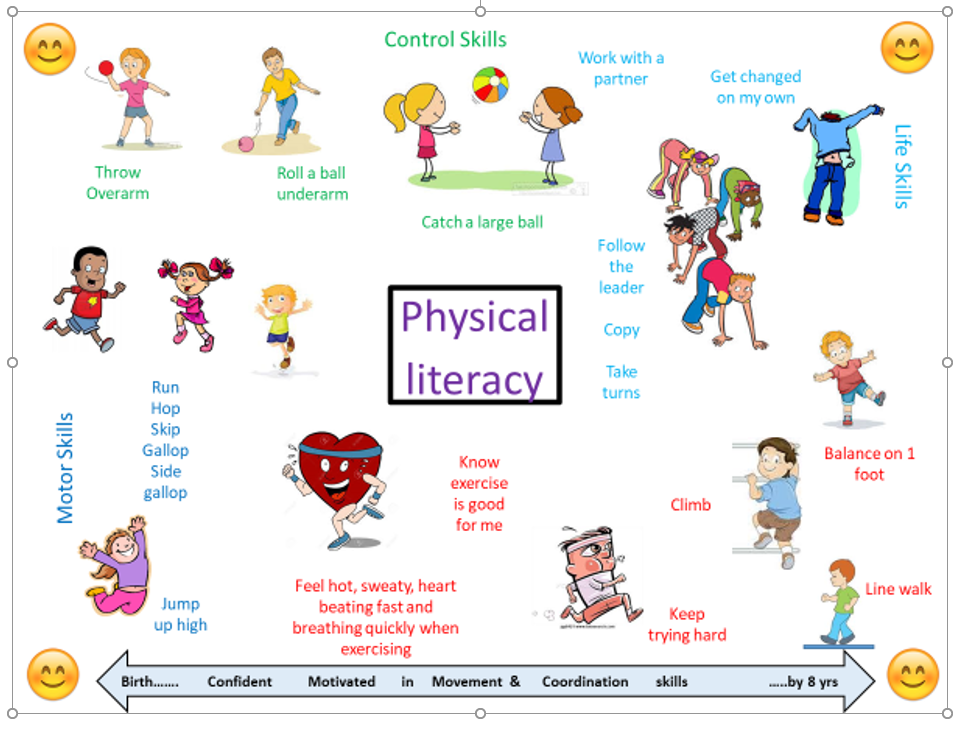Physical Education
“Learning to move, moving to learn”
A broad and balanced physical education curriculum is intended to provide for pupils increasing self-confidence in their ability to manage themselves and their bodies within a variety of movement situations. Progressive learning objectives, combined with sympathetic and varied teaching approaches, provide stimulating, enjoyable, satisfying and appropriately challenging learning experiences for all pupils. The selection of suitably differentiated and logically developed tasks, will help pupils, irrespective of their innate ability, enjoy success and be motivated to further develop their individual potential and take part in lifelong physical activity. The development of physical literacy is central to all our work with children, alongside an ambition to promote healthy lifestyles.
The activities offered and the teaching approaches adopted seek to provide pupils with opportunities to develop their creative and expressive abilities, through improvisation and problem solving. Pupils are encouraged to appreciate the importance of healthy and fit body, and begin to understand those factors that affect lifelong health, well-being & fitness.
Whilst retaining its unique contribution to a pupil’s movement education, physical education also has considerable potential to contribute to much wider areas of learning. It is considered important that physical education is integrated into the whole school’s planning for the development of pupils’ literacy, numeracy, PSHE and ICT skills, as well as key skills such as; their leadership, communication, cooperation and social skills.
EYFS
In EYFS pupils should be taught to: show good control and co-ordination in large and small movements. They move confidently in a range of ways, safely negotiating space. They handle equipment and tools effectively, experiment with different ways of moving, jump off an object and lands appropriately, negotiates space successfully when playing racing and chasing games with other children, adjusting speed or changing direction to avoid obstacles. They travel with confidence and skill around, under, over and through balancing and climbing equipment. They show increasing control over an object in pushing, patting, throwing, catching or kicking it.
Click on image for download
KS1 & KS2
The national curriculum for physical education aims to ensure that all pupils:
-develop competence to excel in a broad range of physical activities --- are physically active for sustained periods of time
-engage in competitive sports and activities --- lead healthy, active lives.
These should be learnt via an activity programme which is broad and balanced and includes: team games, competitive and cooperative activities, dance and swimming*
All aspects of the above curriculum are taught through a which develops key skills using appropriate themes and topics to engage the children.
Physical Literacy
Just like we have the ABC’s for literacy and 123’s in numeracy we have specific skills that need to be taught in PE. These are:
The FUNs – fundamental skills
&
The PE ABCs- agility, balance and coordination
Children need to be given the opportunity to learn, explore and master these skills BEFORE we move them onto sport specific skills & activities. This will make happy & confident learners – a physically literate child.
IF we don’t teach these skills by the age of 7/8 years then we can turn children away from sport for life due to a lack of expertise & confidence which leads to avoidance.



